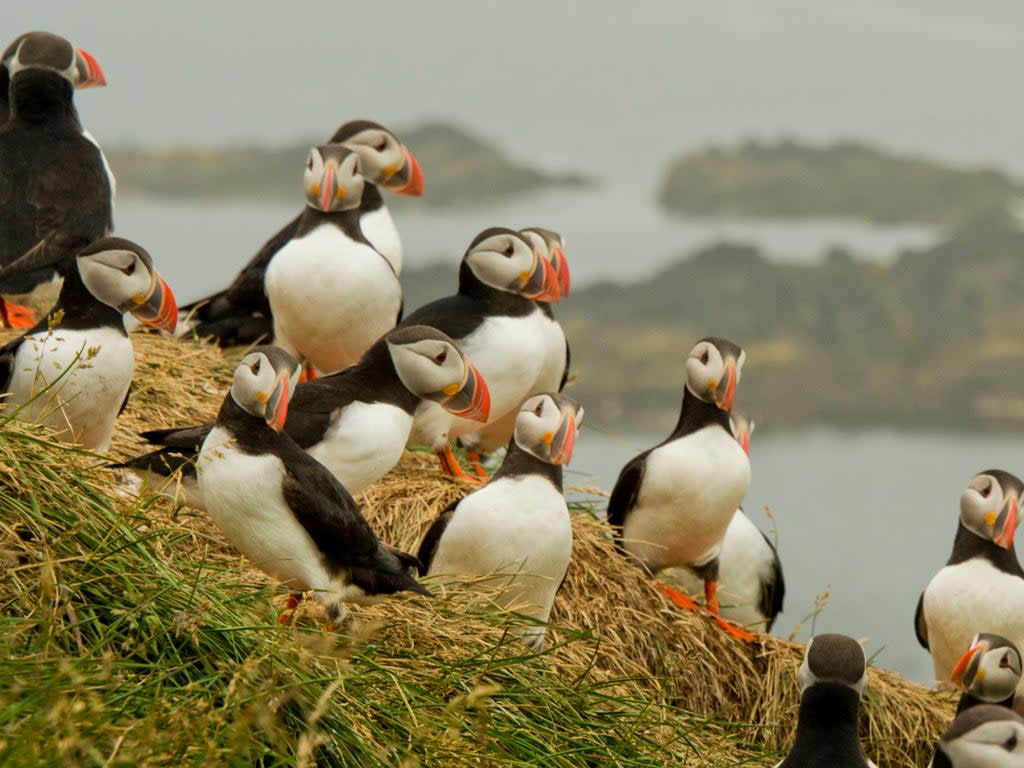Climate crisis is already killing Britain’s birds and 90% of puffins could be dead by 2050

The impacts of the climate crisis are having a dire impact on some of Britain’s best-loved bird species such as the puffin, which faces being almost entirely wiped out in less than 30 years, a major new report has warned.
The British Trust for Ornithology (BTO)’s Climate Change and the UK’s Birds study found that one in five UK bird species will be affected by the impacts of the global climate emergency, with some of the species at risk also including kittiwakes, cuckoos and spotted flycatchers.
The UK’s puffin population – comprising 10 per cent of all puffins in the world, could plunge by as much as 90 per cent by 2050 because of changes to the marine environment caused by rising temperatures which are impacting their food supplies.
Around the world, bird populations have declined most sharply where warming has been most rapid, and the report’s authors are calling for greater awareness of how some climate mitigation efforts, if not applied carefully, could have further disastrous impacts on vulnerable birds.
“This is the first time we’ve pulled together such a comprehensive assessment of the species in the UK being affected by climate change, and their future vulnerabilities,” Professor James Pearce-Higgins, director of science at BTO and author of the report, told The Independent. “We’re particularly aware of the discussions in Glasgow, and are flagging up that some of the decisions made there in terms of how we deal with climate change can also impact on species as well.”
He added: “The main thing which jumped out at me was the fact that if you look at the species which are showing negative responses to temperature – so if they tend to decline after a warm year – those are the species which are tending to show significant population declines.
“Whereas the species which are not showing particularly strong responses to temperature, or even show positive responses to [warmer] temperatures, such as our southern species and other common or widespread species, are actually doing a little bit better. Their populations are not being knocked back by cold winters … and are actually tending to increase.”
And, he said, “there is a really strong fingerprint, or signal, that we’re seeing of the climate change that has occurred so far on our bird communities, and I think this is the first time it’s been well-documented in the UK”.
Chief executive of the BTO, Professor Juliet Vickery, said: “If we are to hold onto our important bird populations then we need governments to make the right decisions for nature and the climate at Cop26, and to invest in real action towards meeting these commitments.”
She added: “There is a very real chance that our grandchildren may never know what it is like to see a puffin in Britain and Ireland.”
There is a very real chance that our grandchildren may never know what it is like to see a puffin in Britain and Ireland
Professor Juliet Vickery, chief executive of British Trust for Ornithology
Professor Pearce-Higgins said the release of the report during the Cop26 summit was “about reminding people of what this is all about”.
“We live in an amazing world with all these fantastic species and we have to remember that,” he said.
The report also focuses on the importance of careful implementation of climate crisis mitigation efforts, such as tree planting and wind farms.
“The concern about some upland species such as the golden plover or curlew, is that they are birds which will not breed if there are trees,” said Prof Pearce-Higgins. “They can even be affected up to a kilometre away from the tree edge. If you plant an area of peatland or moorland with trees, it can have quite a large-scale effect in terms of reducing numbers.”
Speaking about curlews, he said populations “had roughly halved over the last 25 years or so, and that’s a bird that in the UK we’ve got about a fifth to a quarter of the world’s population. So those declines are really significant”.
He added: “If we don’t get this [conservation] right, then there’s the potential that doing something to alleviate climate change might make things worse for those species.”
Tree planting should be done in more suitable areas, he said. Meanwhile, a similar process is already widely used in planning new wind turbines which can also affect species.
“Windfarms are good in terms of generating clean energy, but the way for them to be operated is to ensure they are away from the places which have higher densities of these vulnerable species,” Prof Pearce-Higgins said, adding that “we’re working with government and developers to track birds and use surveys to identify where birds from different colonies go to make sure we minimise the risks.”
One effective means of helping birds in upland areas is the restoration of peat bogs, he said. “It makes the peatlands, and the species that live on them, the golden plovers and the curlews and dunlins, cope with climate change better. It’s a real win-win.”
Read More
World’s largest carbon-sucking factory starts operation in Iceland
‘The climate crisis is a reality’: Africa’s summer of extremes
Against the odds: The fight to save sea turtles in Ras Baridi
More birds of prey than ever being persecuted ‘because of grouse shooting’
Thousands march in Scotland and London on day of worldwide climate protests
One in 15 Tory MPs believe climate change is a ‘myth’, poll finds

 Yahoo News
Yahoo News 
